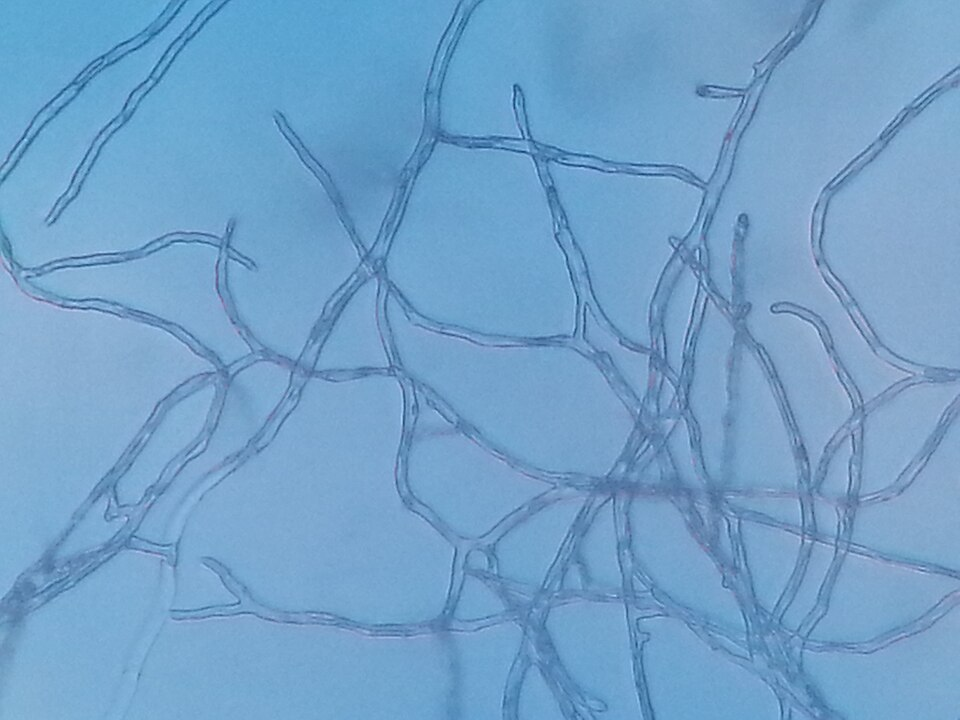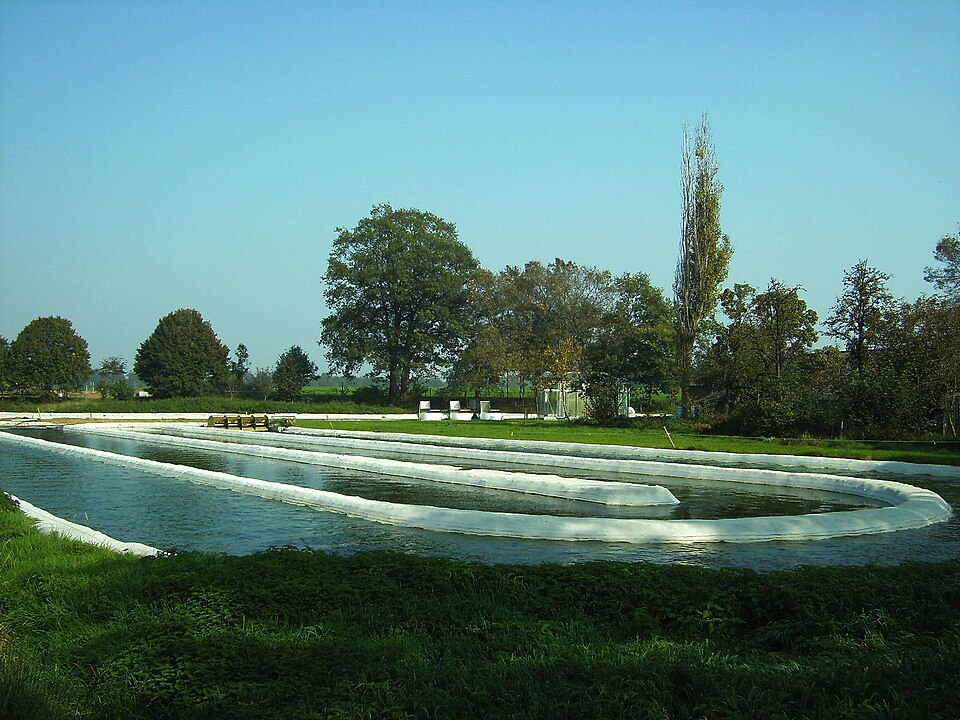OCR Specification focus:
‘Evaluate advantages and disadvantages of using bacterial and fungal biomass to produce foods for human consumption.’
Microorganisms such as bacteria and fungi can be cultivated to produce biomass or metabolites that serve directly as food or ingredients. Their use in human nutrition offers sustainable alternatives to traditional agriculture, but also raises practical, nutritional and ethical considerations.
Microorganisms as Food Sources
Microorganisms used as food include bacteria, yeasts, and filamentous fungi, which can be grown under controlled conditions to produce large quantities of protein-rich biomass. This biomass is harvested and processed for human consumption.
Common Microbial Food Examples
Single-Cell Protein (SCP) – protein derived from microbial cells, e.g. Fusarium venenatum (used in Quorn™).
Spirulina (cyanobacterium) – rich in protein, vitamins and minerals.
Saccharomyces cerevisiae (yeast) – used in baking, brewing and as a nutritional supplement.
Lactic acid bacteria – used in fermented foods such as yoghurt and cheese.
Cultivation of Microbial Biomass
Microorganisms grow rapidly when supplied with an appropriate substrate, temperature, pH, and aeration conditions. Industrial-scale cultivation is typically achieved in fermenters, allowing precise environmental control.
Nutritional and Functional Qualities
Microbial biomass is notable for its high protein content (up to 80% dry mass) and balanced amino acid profile. It also contains:
B vitamins, especially B₁₂ (though some sources may require supplementation).
Essential fatty acids and polysaccharides.
Low fat and cholesterol-free composition.
Single-Cell Protein (SCP): Protein-rich microbial biomass produced by culturing microorganisms such as fungi, yeasts or bacteria for use as food or feed.
However, cell walls composed of complex polysaccharides (e.g. chitin in fungi) can make digestion less efficient for humans. Processing is often needed to enhance palatability and nutrient bioavailability.
Advantages of Using Microorganisms as Food
1. Sustainability and Resource Efficiency
Rapid growth rates – microorganisms can double their biomass within hours, enabling continuous production.
Minimal land requirement – fermenters can be installed anywhere, avoiding the need for fertile farmland.
Reduced water use compared to livestock or crop cultivation.
Substrate flexibility – microbes can grow on waste materials such as whey, molasses, or agricultural by-products, promoting waste recycling.
2. Food Security
Independence from climate – cultivation occurs in controlled conditions, avoiding issues of drought, pests or seasonal variation.
Potential for local production – accessible to regions with limited agricultural capacity, aiding global food equity.
3. High Yield and Productivity
Continuous or batch fermentation allows year-round operation with high yield per unit area.
Short life cycles enable quick scaling to meet demand.
4. Nutritional Quality
Provides complete proteins comparable to animal sources.
Often low in saturated fats, contributing to cardiovascular health.
Can be fortified with vitamins or minerals during processing.
Disadvantages of Using Microorganisms as Food
1. Taste, Texture and Acceptability
Microbial biomass often has an unfamiliar flavour or texture compared with meat or vegetables.
Some consumers express resistance due to “unnatural” perception or associations with waste-grown microbes.
2. Processing and Safety Concerns
Biomass must be purified to remove excess nucleic acids.
High RNA content can increase uric acid levels, causing health issues such as gout.
Risk of contamination with harmful microorganisms requires strict aseptic control.
Heat treatment is necessary to ensure microbial safety, adding to production cost.
3. Economic and Technological Limitations
High setup costs for fermenters and monitoring equipment.
Energy-intensive aeration and temperature control.
Market acceptance and regulatory approval can limit commercial expansion.
4. Nutritional Limitations
Some microbial proteins lack certain essential amino acids or vitamin B₁₂, requiring supplementation.
Chitinous cell walls in fungal sources may reduce digestibility.
Fungal Biomass as Food
Filamentous fungi such as Fusarium venenatum are grown in continuous fermenters to produce mycoprotein, used commercially in Quorn™ products.

Light micrograph of branching fungal hyphae forming mycelium, the filament network whose aligned fibres underpin the texture of mycoprotein foods. This image focuses on structure rather than species-level identification, appropriate for the OCR syllabus. Source.
Production Overview
Carbon source: glucose or starch.
Nitrogen source: ammonia.
Aeration: essential for fungal respiration and biomass yield.
Temperature: maintained around 30°C.
Harvesting: fungal hyphae are filtered and heat-treated to kill live cells.
Texturisation: processed to mimic meat fibres and flavoured for palatability.
Mycoprotein provides a low-fat, cholesterol-free, and high-fibre food source with environmental benefits compared to livestock farming.
Mycoprotein: Protein-rich food produced from filamentous fungi, primarily Fusarium venenatum, cultivated under aerobic conditions in fermenters.
Bacterial and Algal Biomass
Bacterial Biomass
Certain bacteria, such as Methylophilus methylotrophus, can utilise methanol as a carbon source to produce SCP.
Advantages include:
Very rapid growth and simple nutrient requirements.
Disadvantages include:Potential presence of endotoxins that must be removed.
Public perception issues about bacteria as food.
Algal Biomass
Microalgae such as Spirulina and Chlorella are rich in protein, β-carotene, and minerals.
They are cultivated in ponds or photobioreactors, offering a renewable and photosynthetic source of nutrition.

A shallow raceway pond with a powered paddle wheel circulating microalgal culture for uniform light, gas exchange, and nutrient distribution. This configuration underpins large-scale algal single-cell protein production and illustrates renewable biomass cultivation. Source.
Evaluating the Use of Microbial Foods
Advantages Summary
Efficient use of resources and reduction in environmental footprint.
Potential to alleviate global protein shortages.
Scalable and adaptable technology for urban or space-limited areas.
Disadvantages Summary
High production and processing costs compared to traditional agriculture.
Cultural resistance to microbial-based diets.
Possible nutritional imbalances without supplementation.
Overall, microbial foods represent a promising avenue for sustainable nutrition, balancing efficiency with challenges of consumer acceptance, safety, and cost-effectiveness.
FAQ
Fungal biomass is heat-treated after fermentation to kill any living cells and remove residual nucleic acids. This process ensures that no active spores or toxins remain.
Additionally, manufacturers maintain sterile fermenter conditions to prevent contamination by unwanted microorganisms. After harvesting, the fungal biomass is filtered, pasteurised, and tested for microbial purity and chemical safety before being processed into food products such as Quorn™.
Microbial cells, particularly bacteria and fungi, naturally contain high levels of RNA. If consumed in large quantities, this can increase uric acid levels in the blood when RNA is broken down.
Excess uric acid can lead to gout or kidney stones. To prevent this, microbial biomass undergoes heat treatment or alkaline digestion, which denatures RNA and reduces its concentration to safe dietary levels.
Nutrient composition is influenced by conditions such as carbon and nitrogen source, temperature, oxygen availability, and pH.
For example:
Nitrogen limitation may increase lipid content but reduce protein synthesis.
Aerobic conditions promote higher protein yield in fungi and yeast.
Temperature control affects enzyme activity, influencing amino acid balance.
Optimising these factors allows producers to enhance nutritional value and consistency in commercial microbial foods.
Yes. Genetic modification can enhance the nutritional or functional properties of microbial foods.
For instance:
Introducing genes to increase the production of essential amino acids or vitamins.
Reducing cell wall thickness to improve digestibility.
Suppressing metabolic pathways that cause unwanted flavours or by-products.
However, any genetic modification must meet strict food safety and ethical regulations before being approved for human consumption.
Both are rich in protein, but they differ in nutrient profiles and digestibility.
Mycoprotein (from fungi) is high in fibre and has a meat-like texture, making it a good meat substitute.
Algal protein (from microalgae like Spirulina) contains more vitamins, minerals, and antioxidants, including beta-carotene and iron.
Algal cell walls may reduce protein digestibility unless pre-treated, while mycoprotein’s processing increases bioavailability.
Each offers unique nutritional advantages suited to different dietary needs.
Practice Questions
Question 1 (2 marks)
State two advantages of using microorganisms to produce food for human consumption.
Mark scheme:
Award 1 mark for each correct advantage, up to a maximum of 2 marks.
Rapid growth rate allowing continuous production (1)
Requires less land or water than traditional agriculture (1)
Can be produced independently of climate conditions (1)
High protein content and balanced amino acid profile (1)
Can be grown on waste materials, reducing environmental impact (1)
Question 2 (5 marks)
Discuss the advantages and disadvantages of using fungal biomass, such as Fusarium venenatum, as a food source.
Mark scheme:
Award marks for the following indicative points. Maximum 5 marks.
Advantages (up to 3 marks):
High in protein and dietary fibre; low in fat and cholesterol (1)
Can be produced rapidly under controlled fermenter conditions (1)
Requires minimal land and water resources compared to livestock (1)
Production is independent of climate and season (1)
Disadvantages (up to 3 marks):
May have an unfamiliar taste or texture, reducing consumer acceptance (1)
Requires processing to remove excess nucleic acids and ensure safety (1)
Production involves high energy input and capital cost (1)
Some nutritional components, such as vitamin B12, may need supplementation (1)
Quality of discussion (1 mark):
Balanced answer that considers both advantages and disadvantages in a comparative way or provides evaluative commentary (1).

